In the first of a two-part series with Kay Benseman (Pākehā German, Irish, Scottish, Spanish, English ancestry) and Barry McLernon (Te Āti Awa & Pākehā Scottish, Dutch ancestry) about Te Tiriti o Waitangi, Kay shares her thoughts about the lack of children’s picture books on this kaupapa. You can read Part 2 here.
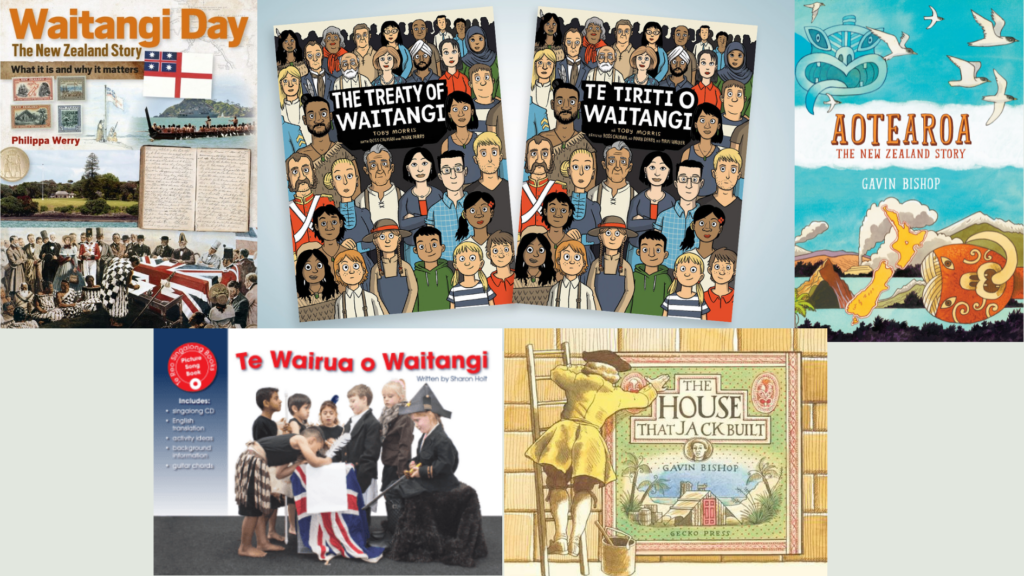
Te Tiriti o Waitangi is the foundation of the formal relationship between the British Crown and iwi Māori in Aotearoa, yet there are very few picture books about it to read to our tamariki. Last week, I visited the local library and two bookshops to hunt out any newly-published children’s books about the Treaty. There were no books on display about Waitangi Day (new or otherwise), and it took 20 minutes to find the only children’s title on the subject (Sharon Holt’s Te Wairua o Waitangi). It wasn’t shelved in the bilingual / reo Māori section, on the ‘Māoritanga’ shelf or even with the New Zealand-authored picture books. But with the Guinness Book of Records, tucked away at the back of a stack of her other titles.
Perhaps there aren’t enough books published for children about Te Tiriti to fill a shelf or tabletop? Instead of accurate, quality iwi-led publications, stories about fictional treaty agreements are read to classrooms and at bedtime. Some of these are truly cringe-worthy and need to be retired. Many rely on vague metaphors that don’t do justice to the depth of mamae caused by Treaty breaches and colonisation. There have been some excellent non-fiction books about Te Tiriti written for older readers in recent years, really informative as reference material for educators and whānau, but the language and scope aren’t aimed at young tamariki.
When our mātāmua was just a toddler, we were given two of Gavin Bishop’s (Ngāti Pūkeko, Ngāti Awa, Ngāti Mahuta, Tainui) books; Konei te Whare nā Haki i Hanga/This is the House That Jack Built and Aotearoa: The Story of New Zealand. While the text was beyond our wee one, the beautiful illustrations provided my husband and me with opportunities to talk about where our European tūpuna came from, what happened when they arrived in Aotearoa and the impact of that on iwi Māori. My pōtiki often points out the illustration of Gustav von Tempsky and reminds us that ‘he made lots of terrible choices!’.

Sarah Balcazar of Reading Partners explains that;
Picture books also explore difficult subjects … [they] offer outlets for kids to explore challenging subjects in a format that’s approachable to them.
Sarah Balcazar
Most of the children’s books about Te Tiriti o Waitangi that are currently available are written by Pākehā. These books don’t communicate a lived experience of the impact of the Treaty, or they tell stories without iwi permission. Thorough processes are vital in this space, especially for Pākehā. Vincent Olsen-Reeder explains that it is not uncomplicated for those with whakapapa to these stories to publish them either;
There is a lot of feeling wrapped up in the reality surrounding this book. Lots of people take Māori stories and write them up – even people who have nothing to do with them. They won’t ever have to feel like this, which makes taking (and re-writing) our histories really easy.
Vincent Olsen-Reeder
There’s often no information about the author or illustrator’s whakapapa or positionality, and their biases are not named or put in context. Without this transparency, readers may not have confidence in the information sources.
Mandy Hager was very mindful of this when writing about Māori history as a non-Māori person, “it’s really important that [young people] realise that everything is curated through somebody’s mind or point-of-view, and so I would rather be upfront and say this is where I’m coming from.” Tamariki Māori may relate to books written about their own history by Māori in a vastly different way, as the author tells stories from a shared perspective in a more relatable way. Iwi can maintain the mana of their own kōrero, after decades of being spoken and written about by others.
Due to the overwhelming amount of media, information and disinformation in our everyday lives, tamariki are exposed to conflict and injustice arising from colonisation without any contextual knowledge or understanding about the background to these kaupapa. Morgan Godfrey (Te Pahipoto, Sāmoa) suggests that historical education enables us to “evaluate why things happened, and their continuing impact through the years”. He believes that the “chief skill of a historian is the evaluation of evidence … judging the credibility of sources they find, cross-checking and cross-referencing claims and counter-claims … in the age of misinformation, that might make history perhaps the most important form of knowledge of all.”
Perhaps as Pākehā, we forget that many Māori tamariki don’t need curriculum learning outcomes to give them an understanding of Treaty injustices; they live with them. ‘Whitewashing’ our colonial past and our contemporary injustices as a country won’t help our tamariki build a safer, fairer Aotearoa.
But we have to remember that nobody died from a little bit of discomfort. People did actually die when they were forced off their lands at gunpoint, so we need to keep it in proportion.
Joanna Kidman, Ngāti Maniapoto, Ngāti Raukawa, Ngāti Toa Rangatira
Most of the children’s picture books published about the Treaty in the last couple of decades skirt around the reality of these issues which is a disservice to our children. It’s a missed opportunity for them to understand what is needed to become a generation of more honourable Tiriti partners; these books don’t invite further investigation or interest in the histories of Aotearoa. We need reading material that sparks curiosity and inspires them to want to learn more, at secondary or potentially tertiary level.
Quality artwork and imagery in picture books helps children process and understand “new or potentially distressing topics” safely, at a relational pace. The child can ask questions, and the reader can pause and talk about what they’re reading and seeing together. When tamariki ask pātai, adults can say, “hey, let’s find that book” they know there’s a QR code in the back to online resources, suggested videos and podcasts and quality information. It would be brilliant to have guidance there for adults who never had access to this learning in their own childhood.
Other than Sharon Holt’s and Gavin Bishop’s books already mentioned, the others that I’ve found to be useful, accurate and regularly read are:
- Philippa Werry’s Waitangi Day: The New Zealand Story is worth having on your bookshelf and has some great images for follow-up discussion with children, but is aimed at older readers.
- The bilingual graphic novel, Te Tiriti o Waitangi is brilliant, but again is suitable for older children. It’s by Toby Morris (Pākehā) & Ross Calman (Ngāti Raukawa, Ngāti Toa, Kāi Tahu) and Mark Derby, translated into te reo Māori by Piripi Walker (Ngāti Raukawa ki te Tonga) and was a real collaborative effort. I’d love to see a junior version of this published!
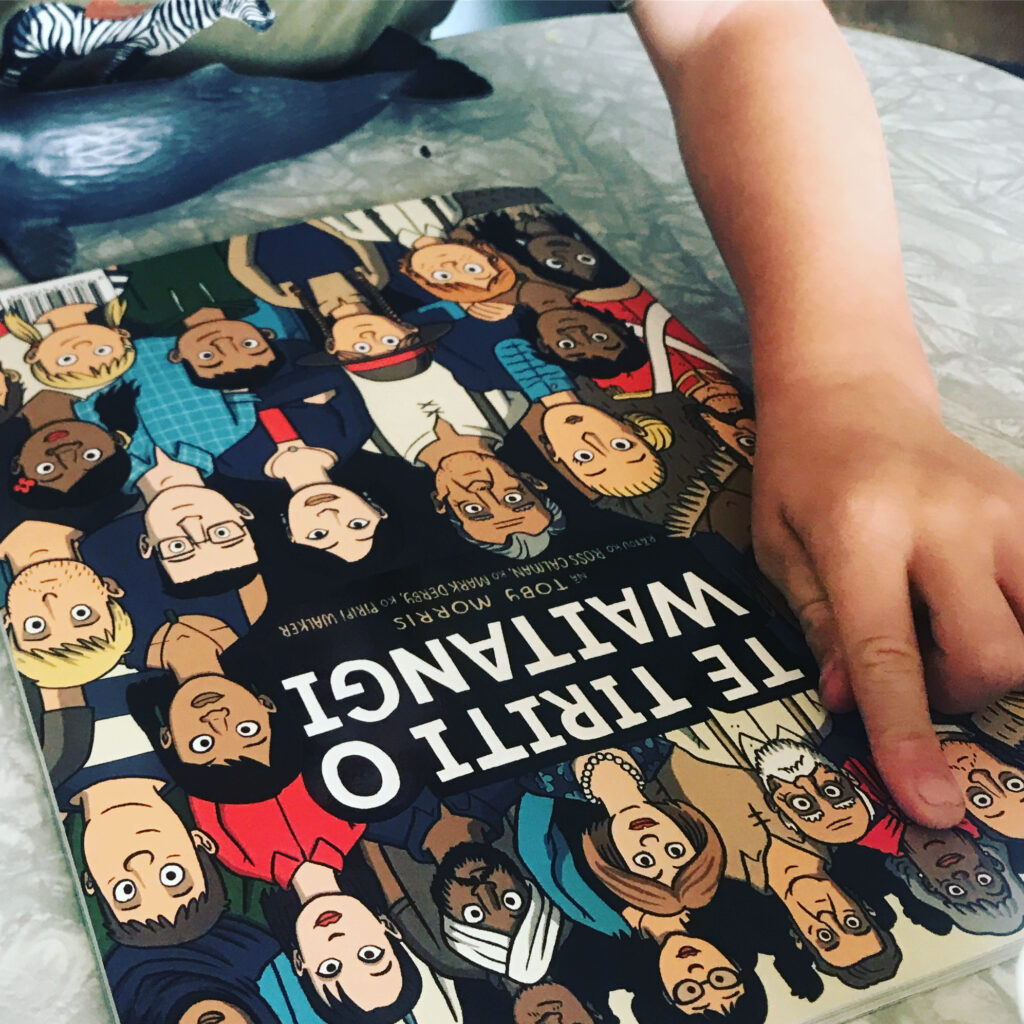
A longer list of books with other resources linked is available here. There have been a few self-published picture books recently released, but I’ve not been able to find these in bookshops or library catalogues or access any information that indicates these titles have been authored or illustrated by iwi Māori.
One of the things we were trying to set out in the book is that this history is everywhere, and people need to connect with the stories of the whenua that they live on, and hopefully, that’s something that will come through in the history curriculum.
Vincent O’Malley, 2022
While we eagerly await the publication of the picture books we need, there are lots of other ways to engage with Te Tiriti o Waitangi as a whānau. On Waitangi Day, we will go along to the local iwi community event and visit the site where local iwi signed Te Tiriti. My tamariki are planning a visit to Te Tii Waitangi Marae and the Treaty Grounds in Te Tai Tokerau for next year. But I believe that the most important mahi is what happens on every other day of the year, too. Dr Hana O’Regan (Kāi Tahu) and Leah Te Whata (Ngāpuhi, Whanganui Iwi, Ngāti Raukawa) share some amazing insight about whakatinanatia o te Tiriti – living with a Tiriti mindset here – considering everything we do from that perspective, then “holding ourselves accountable and actually shift practice and behaviour to reflect what that means”.
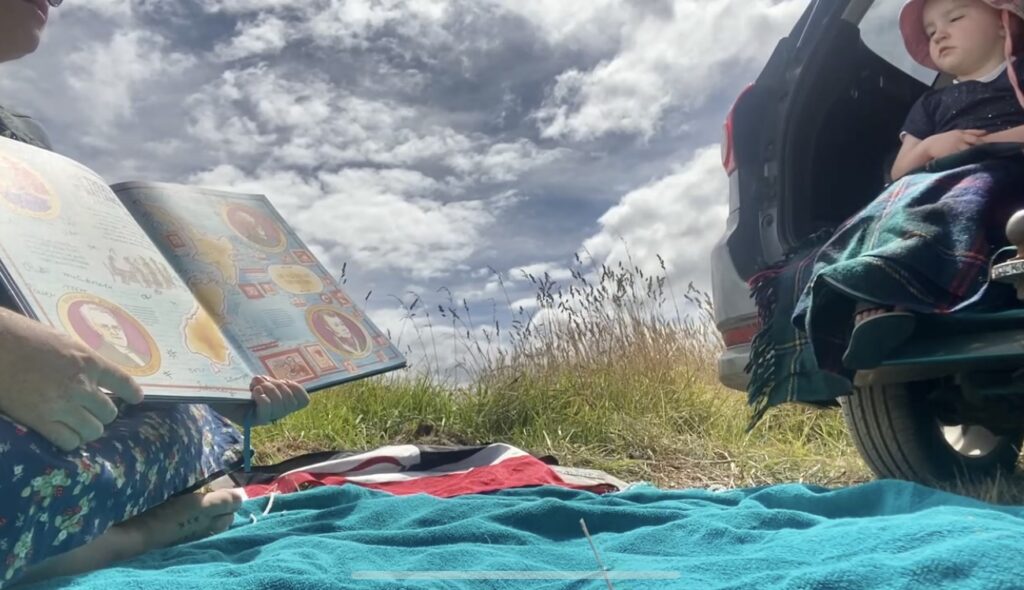
It is a lengthy and vital process to unlearn our misconceptions and learn the truth of history as parents and kaiako. Truly life-changing. Doing this alongside our tamariki would be greatly enhanced by beautiful pukapuka my children could read themselves, too.
Read Part 2 here.
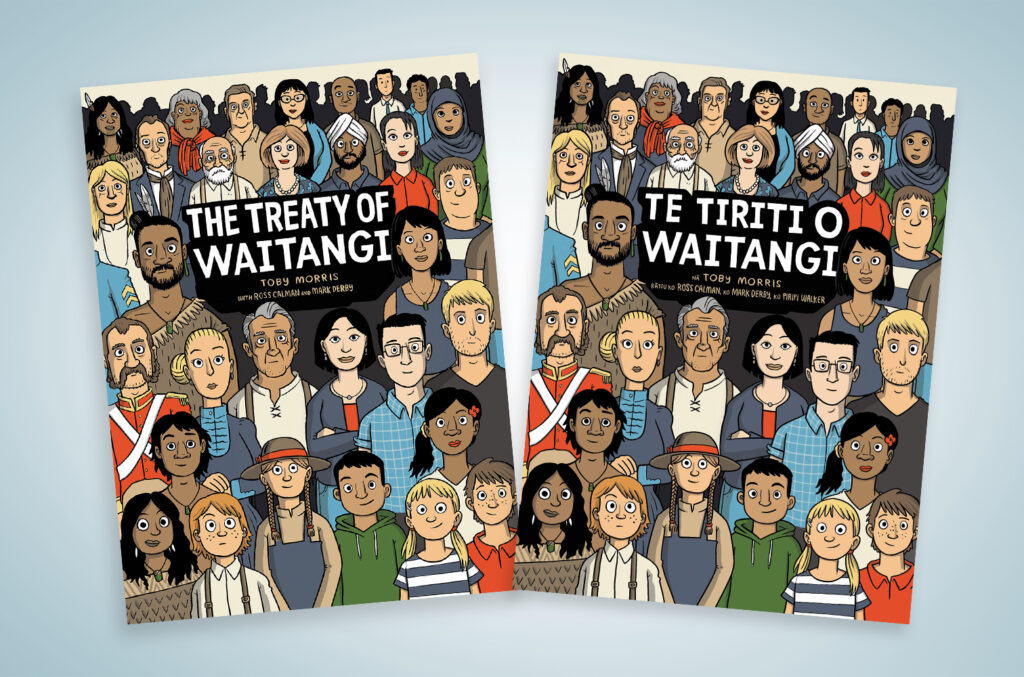
Te Tiriti o Waitangi | The Treaty of Waitangi
By Toby Morris, Ross Calman & Mark Derby
Translated by Piripi Walker
Published by Lift Education
RRP: $20.00
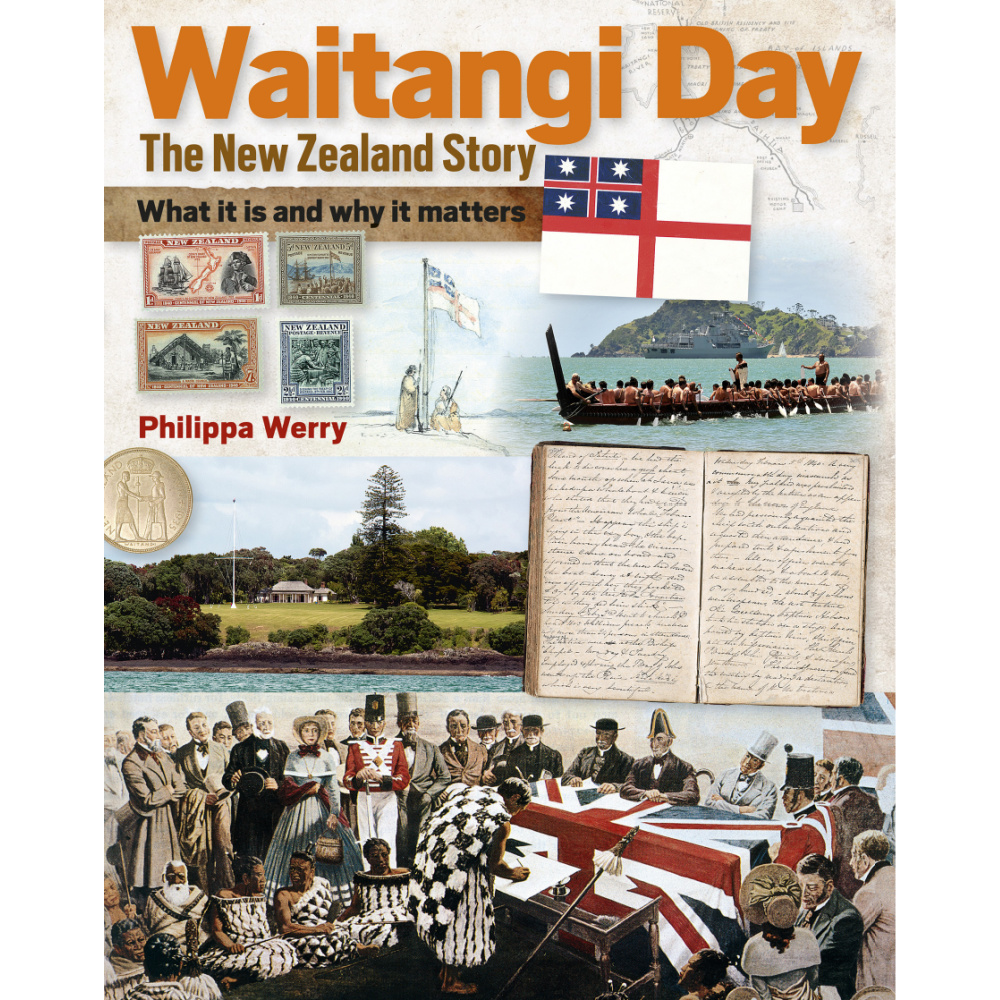
Waitangi Day: The New Zealand Story
By Philippa Werry
Published by New Holland Publishers
RRP: $27.99
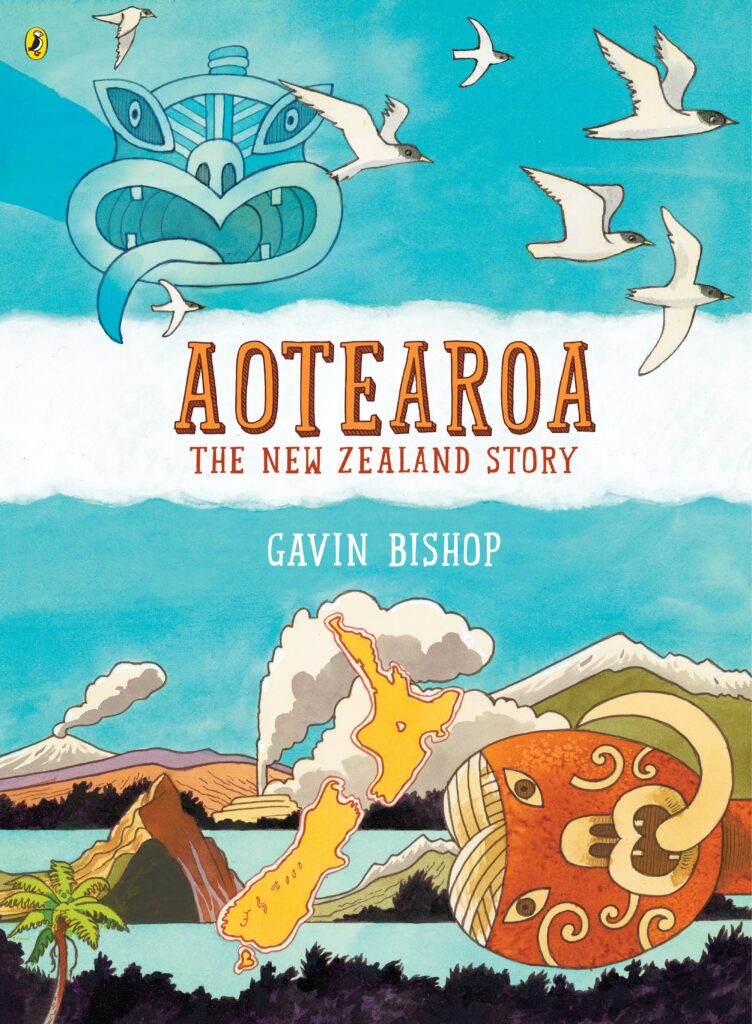
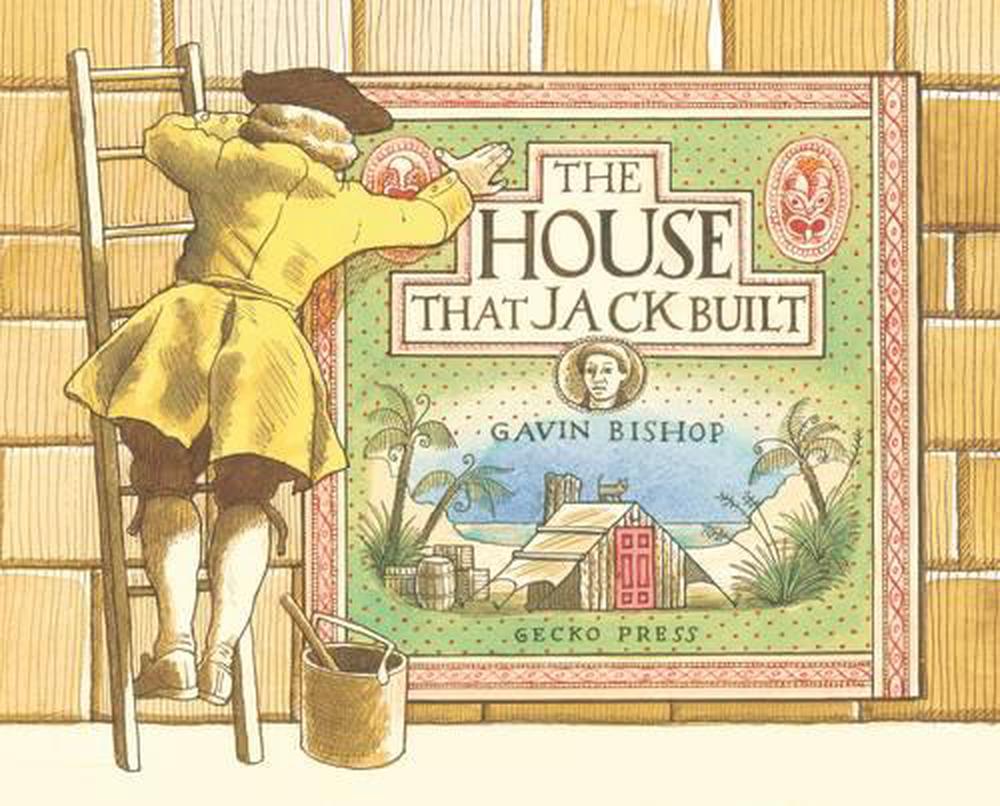
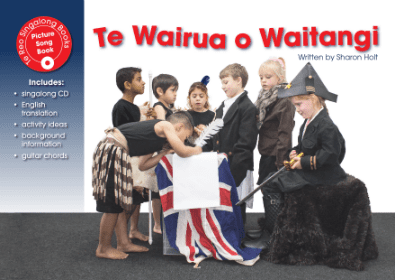

Kay Benseman
Kay Benseman (she/her) is a collector of quirky children's books and kupu hou. In the 90s, she worked in a bookshop and had a 40% staff discount, and her bookshelves have never recovered. With a background in education and the cultural sector, she is now a writer/researcher and Māmā to two curious children. He tāngata Tiriti ia, Kay is Pākehā living on Ngā Rauru whenua in Whanganui.



